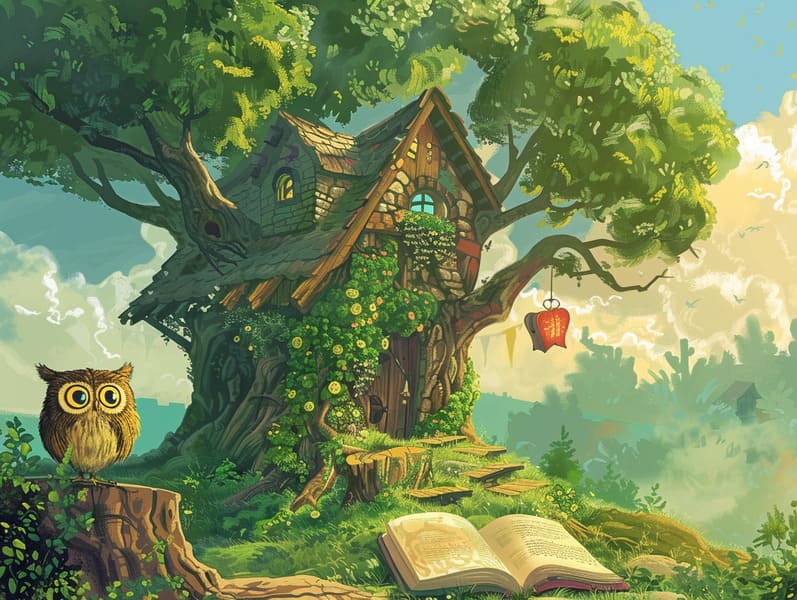Delving into the Background of Traditional Fairy Tales and Its Everlasting Appeal.
Delving into the Background of Traditional Fairy Tales and Its Everlasting Appeal.
Blog Article

Grimm's fairy tales have long histories. These tales have been transmitted from one generation to the next centuries before they were ever inscribed. They came from a variety of traditions, including American traditions. They were initially transmitted among mature audiences, often carrying themes and messages pertaining to the societal norms and beliefs of the time.
Jacob and Wilhelm Grimm, the two Grimm brothers, were among the first to assemble many of these beloved fairy tales. Their compilation, "Grimm's Fairy Tales," included tales like "Cinder Maid," "Little Brother and Little Sister," and "Schneewittchen," which have since become pillars in the world of children's fairy tales. Similarly, the Danish author's imaginative narratives, such as "The Little Mermaid," and "The Story of the Ugly Duckling," have gained the love worldwide, solidifying their place in the pantheon of timeless fairy tales.
Despite being ancient, traditional fairy tales remain as significant as ever, especially as children's night stories. These delightful tales are now available in multiple formats, including artistically illustrated books, charming animations, and online storybooks.
Their lasting presence can be attributed to several enchanting factors:
Life Lessons: Old fairy tales often offer important moral lessons. Stories like "The Tale of the Boy Who Cried Wolf" teach the merit of truth, while "The Race of the Tortoise and the Hare" show the values of persistence and modesty. These stories offer children clear distinctions between good and bad, developing their moral compass in a gentle yet impactful way.
Empathy and Understanding: Ancient fairy tales frequently feature personalities facing challenges and struggles, fostering readers to connect with their struggles and boost their triumphs. For instance, "Beauty and Her Beast" emphasizes the virtue of looking past the exterior to understand the inner core of a person, promoting compassion and comprehension.
Cultural Knowledge: Many classic fairy tales are steeped in the cultural contexts from which they came. Reading these narratives can provide fascinating glimpses into different backgrounds, cultivating a sense of global awareness and awareness.
Inventiveness and Fantasy: The mythical elements in classic fairy tales—magical beings—promote children’s imaginations. These narratives take readers to imaginary realms, generating fantastical thinking and a sense of enchantment that endures a lifetime.
Old fairy tales are not only charming but also enlightening. They serve as fantastical tools in nurturing various click here brain and heart skills in young readers. When timeless fairy tales are spoken out loud, they boost verbal skills by presenting new phrases and elaborate sentence structures. This practice also improves auditory skills and mindfulness, as young ones remain attentive, eager to see what happens next.
Furthermore, exploring the themes and characters of timeless fairy tales can promote reasoning skills and critical thinking. Kids are instructed to see patterns, make predictions, and know cause and effect. These conversations also assist children verbalize their thoughts and feelings, cultivating their emotional intelligence.
In today’s technological age, the availability of digital fairy tales has made these tales more within reach than ever. Websites and programs provide extensive collections of famous fairy tales that can be explored or heard anytime, anywhere. Fairy tales read out loud are particularly favored, featuring an fun way for young readers to appreciate these bewitching tales. Read-aloud stories and read-aloud videos transport characters and settings to life, often joined by entrancing soundtracks and harmonies that enrich the tale experience.
The persistent attraction of timeless fairy tales lies in their ability to evolve to today's society while retaining their main lessons. Contemporary reimaginings of these tales often highlight more representative characters and modern settings, making them familiar to today’s audience. However, the underlying themes of courage, humanity, and justness remain unchanged, continuing to strike a chord with kids of all ages.
Traditional fairy tales also offer a sense of security and closeness. They bestow a structured narrative with a recognizable beginning, middle, and end, often ending with the termination of conflicts and the triumph of virtue over wickedness. This constancy can be solacing for young ones, extending a sense of consistency in an shifting world.
Old fairy tales continue to fascinate and edify new generations, maintaining their majesty and importance in modern society. As kids' bedtime tales, they highlight a perfect blend of fantasy and learning, nurturing moral values, empathy, and creativity. The availability of digital fairy tales and the sought after status of fairy tales read out loud warrant that these old narratives remain within reach to new generations.
By preserving and disseminating these tales, we continue to extol the rich tapestry of inventiveness and cultural heritage. Whether you are seeing a gorgeously illustrated book, delving into a internet library, or playing an read-aloud story, the charm of bedtime fairy tales is always within reach. These fairy tales demonstrate of the everlasting nature of tales and its ability to gather us across generations and cultures.
If you are seeing a colorful picture book, accessing a internet collection, or listening on an audio story, the fascination of bedtime fairy tales is always within reach.
These fairy tales point out of the eternal essence of fairy tales and its ability to bind us across eras and regions, casting a charm that captivates and teaches alike.